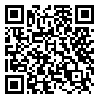BibTeX | RIS | EndNote | Medlars | ProCite | Reference Manager | RefWorks
Send citation to:
URL: http://jhsw.tums.ac.ir/article-1-6-en.html
Introduction: In today comparative markets, the organizations and companies will be success that adopt the standards related to their all works and services. By thechnalization and machinism, we are witnessed of higher rate of industrial accidents as well as economic losses in everyday activities. Therefore, the need for occupational safety and health standards is future required, otherwise, a serious losses will rise for those organizations, accordingly.
.
Material and Method: IIn this study, the threats, opportunities, weaknesses and strengths were evaluated by one of the tools named SWOT, in one of the assembly industries company in Iran, in order to controlling the operations in this company considering to safety and health standard (OHSAS18001). A comparison of the company’s performance in implementing the safety and health standards was done between years 1387 and 1388 contain in the Company considered, and weighted scoring weaknesses, strengths, threats and opportunities using the matrix of internal factors (strengths and weaknesses) and external factors (treats and opportunities) then, the importance of each factor were determined in the company’s implementation and enforcement of those standards.
.
Result: Focusing on the strengths and weaknesses, opportunities and threats, some strategies to improve the implementation were presented. Any points were weighted based on the most important weaknesses identified as the lack of monitoring contractors, lack of management commitment for implementation of OHSAS18001, no attempt to identify the risks of change, lack of training needs assessment, main strengths identified in the context of adequate budget health and safety, environmental efforts, identify risk for abnormal conditions, the most important threats for immediate delivery customer orders and the opportunity to support the safety and health plans, were determined.
.
Conclusion: Sum of the weighted scores in year 87 were obtained for the external factors (opportunities and threats), 2.16 and internal factors (strengths and weaknesses) 1.66. Both of these scores were less than 2.5 (minimum amount of the acceptable rate) so, the company has been poor performance in the implementation of this standard for the year 87 and a weak reaction in the use of opportunities and the minimize threats has. In case of internal factors, it was worse than external one and the situation was more bold of the weaknesses companies to the strengths and of the organization. But, in the year 88, due to changes in the organizational structure of the company, the weighted score for external factors 3.2 and for the internal factors was 3.64, indicating an improvement in the companies conditions.
| Rights and permissions | |
 |
This work is licensed under a Creative Commons Attribution-NonCommercial 4.0 International License. |



